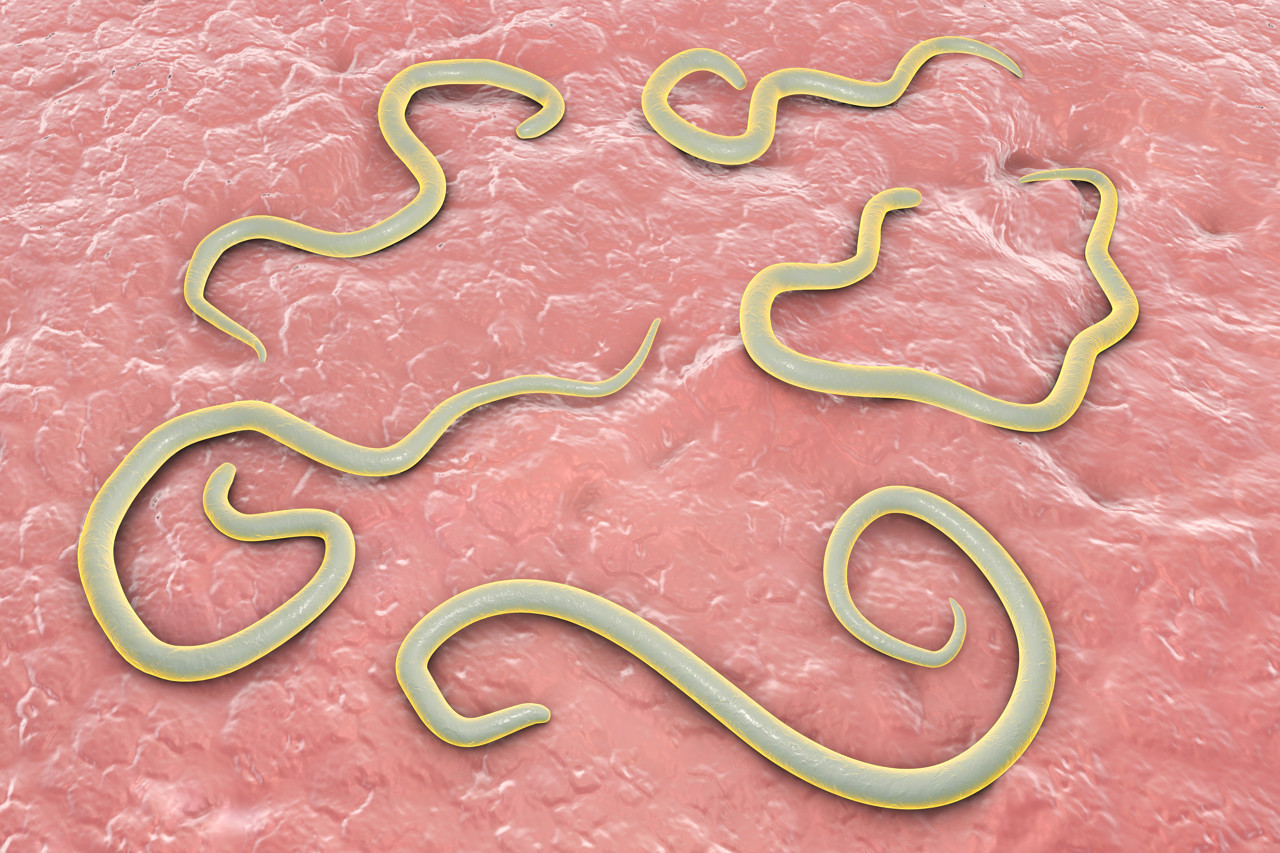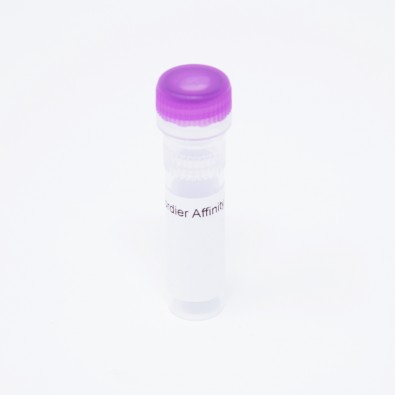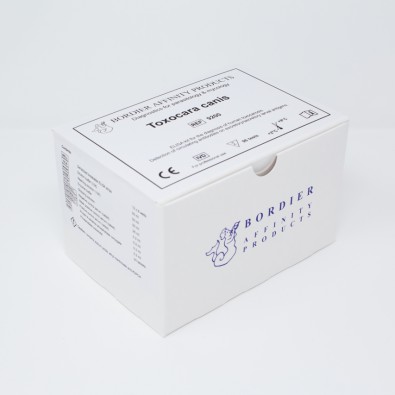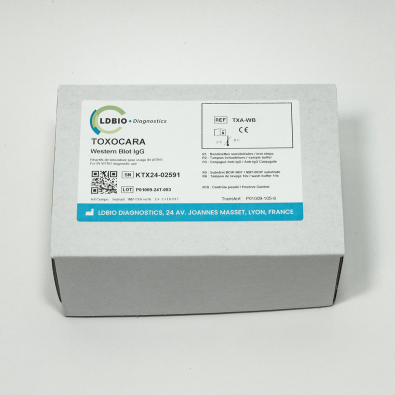Toxocara Canis

Toxocariasis is a tissue helminthiasis due to nematode larvae belonging to the Toxocara genus. The most common agent is Toxocara canis (parasite of the dog), and sometimes Toxocara cati (parasite of the cat).
Contamination of Man, accidental host, occurs by absorption embryonated eggs or larvae. In the first case, risk factors are ingestion of raw vegetables that grew on soils contaminated by domestic animal feces, poor hygiene (sand contamination in sandbox, children putting their contaminated hands to their mouth) or geophagia phenomenon. In the second case, contamination comes from larvae liberated during digestion of undercooked offal (mostly liver) (Chen J. et al., 2018). Complete parasitic cycle among human is not possible, and Toxocara remain in their larval form.
Toxocariasis is mostly asymptomatic and heals spontaneously, with a persisting positive serology for several years. According to the affected organs, 4 clinical forms can be observed: visceral larva migrans syndrome (VLM), ocular toxocariasis (OT), neurotoxocariasis (NT) and common toxocariasis (CT).
In case of massive and/or repeated infestations, toxocariasis can lead to general clinical signs (CT: asthenia, weight loss, rarely fever), allergic manifestations, mostly cutaneous (more important if the patient is a carrier of an atopic terrain, known or ignored), digestive troubles (various aches and pain, diarrhea). Polymorphic visceral manifestations (pulmonary, nervous, cardiac…) are essentially observed for massive infestations (VLM). Conversely, OT is mostly isolated (Magnaval et al., 2001).
Most of non-regularly dewormed dogs and cats carry adult Toxocara. About a fifth of the global population is exposed to the parasite. Hence, Toxocariasis is a cosmopolitan helminthozoonosis, whose seroprevalence is comprised between 2.5% (in urban areas) and 40% (in rural areas) (Guangxu et al., 2020).
Direct parasitological observation, invasive, is not feasible. Diagnosis, oriented by non-specific biological abnormalities (hypereosinophilia, total IgE level increase), relies on serology.
As the prevalence of systemic toxocariasis in most populations is high, immunodiagnosic of OT, rare, is done on aqueous humor. Immunodiagnosic on CRL can be done with neurologic symptoms and rachidial eosinophilia.
Amongst classic serological techniques, the most commonly used is the ELISA. Frequent cross-reactions and lack of sensitivity observed for figured antigens or soluble larvae/ adult worm extracts lead to the use of Excretory/Secretory (ES) antigens, obtained by in vitro culture of Toxocara canis larvae.
Nevertheless, ES antigens are complex and have a lot of common antigenic clusters with other helminths, leading in cross-reactions that reduce the performances of these tests (Macpherson, 2013, Fillaux et al., 2013).
SCIENTIFIC REFERENCES
- Artinyan E, Uysal HK, Akgul O, Altiparmak S, Oner YA. Research on Toxocara canis antibodies obtained from patients with eosinophilia. 2014; Indian J Med Microbiol 32(4):383-6
- Despreaux R, Fardeau C, Touhami S, Brasnu E, Champion E, Paris L, et al. Ocular Toxocariasis: Clinical Features and Long-term Visual Outcomes in Adult Patients. 2016 Jun; Am J Ophthalmol 166:162-8
- Eberhardt O, Bialek R, Nägele T, Dichgans J,Eosinophilic meningomyelitis in toxocariasis: case report and review of the literature. 2005; Clinical neurology and neurosurgery 107(5):432–438
- Fillaux J, Magnaval JF. Laboratory diagnosis of human toxocariasis. 2013; Vet Parasitol 193(4):327-36
- García HH, Cancrini G, Bartalesi F, Rodrigez S, Jimenez JA, Roldan W, et al. Evaluation of immunodiagnostics for toxocarosis in experimental porcine cysticercosis. 2007; Tropical medicine & international health 12(1):107–110
- Gavignet B, Piarroux R, Aubin F, Millon L, Humbert P. Cutaneous manifestations of human toxocariasis. 2008; Journal of the American Academy of Dermatology 59(6):1031–1042
- Logar J, Soba B, Kraut A, Stirn-Kranjc B. Seroprevalence of Toxocara antibodies among patients suspected of ocular toxocariasis in Slovenia. 2004; The Korean journal of parasitology 42(3):137–140
- Lötsch F, Obermüler M, Mischlinger J, Mombo-Ngoma G, Groger M, Ayola Adegnika A, et al. Seroprevalence of Toxocara spp. in a rural population in Central African Gabon. 2016; Parasitol Int Dec;65(6 Pt A):632-634f
- Macpherson CN. The epidemiology and public health importance of toxocariasis: a zoonosis of global importance. 2013; Int J Parasitol 43(12-13):999-1008
- Magnaval JF, Glickman LT, Dorchies P, Morassin B. Highlights of human toxocariasis. 2001; The Korean journal of parasitology 39(1):1–11
- Qualizza R, Incorvaia C, Grande R, Makri E, Allegra L. Seroprevalence of IgG anti-Toxocara species antibodies in a population of patients with suspected allergy. 2011; International journal of general medicine 4:783–787
- Singh G, Bawa J, Chinna D, Chaudhary A, Saggar K, Modi M, et al. Association between epilepsy and cysticercosis and toxocariasis: a population-based case-control study in a slum in India., 2012; Epilepsia 53(12):2203–2208
- Zibaei M, Firoozeh F, Bahrami P, Sadjjadi SM. Investigation of anti-Toxocara antibodies in epileptic patients and comparison of two methods: ELISA and Western blotting. 2013; Epilepsy research and treatment 2013:156815
{{ productCount ? productCount : 'Showing all 5 results' }}





